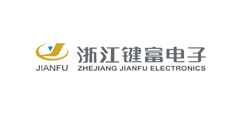The Role of Tactile Switches in Home Automation Systems

Introduction
In the realm of home automation, Tactile Switches are becoming increasingly indispensable for homeowners looking to streamline their daily routines and enhance their living spaces. These innovative components offer a seamless and intuitive way to control various devices and systems within a smart home setup. In this article, jianfu will delve into the significance of tactile switches in home automation systems and explore the myriad benefits they bring to modern households.
What Are Tactile Switches?
Tactile switches, also known as push-button switches, are electromechanical components that are designed to provide tactile feedback when pressed. These switches are commonly used in electronic devices and control panels to initiate specific actions or functions. In the context of home automation, tactile switches serve as the primary interface through which users interact with their smart home systems.
Key Features of Tactile Switches
- Tactile Feedback: Tactile switches offer a distinct tactile sensation when pressed, providing users with physical feedback that confirms their input.
- Durability: Tactile switches are built to withstand frequent use and have a long lifespan, making them ideal for high-traffic areas in a home.
- Customizability: Tactile switches can be customized with different colors, shapes, and designs to suit the aesthetic preferences of homeowners.
- Versatility: Tactile switches can be integrated into a wide range of home automation systems, including lighting controls, security systems, and entertainment setups.
Benefits of Using Tactile Switches in Home Automation Systems
1. Enhanced User Experience: Tactile switches offer a tactile sensation that mimics traditional mechanical switches, providing users with a familiar and intuitive interface for controlling their smart home devices.
2. Improved Accessibility: Tactile switches can be easily located and operated by individuals with limited mobility or visual impairments, making them an inclusive choice for home automation systems.
3. Energy Efficiency: By enabling precise control over lighting, HVAC systems, and other devices, tactile switches help homeowners optimize energy usage and reduce utility costs.
4. Seamless Integration: Tactile switches can be seamlessly integrated into existing home automation setups, allowing for effortless expansion and customization as technology evolves.
5. Aesthetically Pleasing: With their sleek and modern designs, tactile switches add a touch of sophistication to any home automation system, enhancing the overall visual appeal of the living space.
FAQs
1. Can tactile switches be used in outdoor home automation applications?
Yes, tactile switches are available in weatherproof and ruggedized designs that are suitable for outdoor use in home automation systems.
2. Are tactile switches compatible with voice-controlled smart home assistants?
Yes, tactile switches can be integrated with voice-controlled smart home assistants like Amazon Alexa and Google Assistant to provide a multi-modal control experience.
3. How do tactile switches differ from capacitive touch switches?
Tactile switches provide physical feedback when pressed, while capacitive touch switches rely on touch-sensitive panels that respond to the proximity of a finger without the need for physical contact.
4. Can tactile switches be retrofitted into existing home automation systems?
Yes, tactile switches are designed to be easily retrofitted into existing setups, allowing homeowners to upgrade their control interfaces without extensive rewiring or installation.
5. Are tactile switches suitable for commercial and industrial automation applications?
Yes, tactile switches are versatile components that can be utilized in a wide range of automation applications, including commercial buildings, industrial facilities, and healthcare environments.
Conclusion
In conclusion, tactile switches play a crucial role in home automation systems by providing users with a tactile, intuitive, and customizable interface for controlling their smart home devices. These versatile components offer a host of benefits, including enhanced user experience, improved accessibility, energy efficiency, and seamless integration. By incorporating tactile switches into their home automation setups, homeowners can enjoy greater convenience, comfort, and efficiency in their daily lives.
- +1 Like
- Add to Favorites
Recommend
- The Best Practices for Extending the Lifetime of Tactile Switches
- Littelfuse Advanced EL2 Tactile Switches Provide SMT and IP67 for High-Efficiency Applications
- 10 Creative Ways to Use Sealed Tactile Switches in Interior Design
- KSC XA Tactile Switches from Littelfuse Deliver Soft Sound Tactile Feedback for Enhanced User Experience
- Can the Operating Force of Kinghelm Tactile Switches be Customized?
- Enhance Your Switching Experience with Low Profile SMT Tactile Switches
- Revolutionize Your Switching Solutions with Low Profile SMT Tactile Switches
- Kinghelm KH-6X6X17H-TJ: The Pinnacle of Reliability and Performance in Tactile Switches
This document is provided by Sekorm Platform for VIP exclusive service. The copyright is owned by Sekorm. Without authorization, any medias, websites or individual are not allowed to reprint. When authorizing the reprint, the link of www.sekorm.com must be indicated.












































































































































































































































































































































































































































































































































































































































































































































































































































































































































